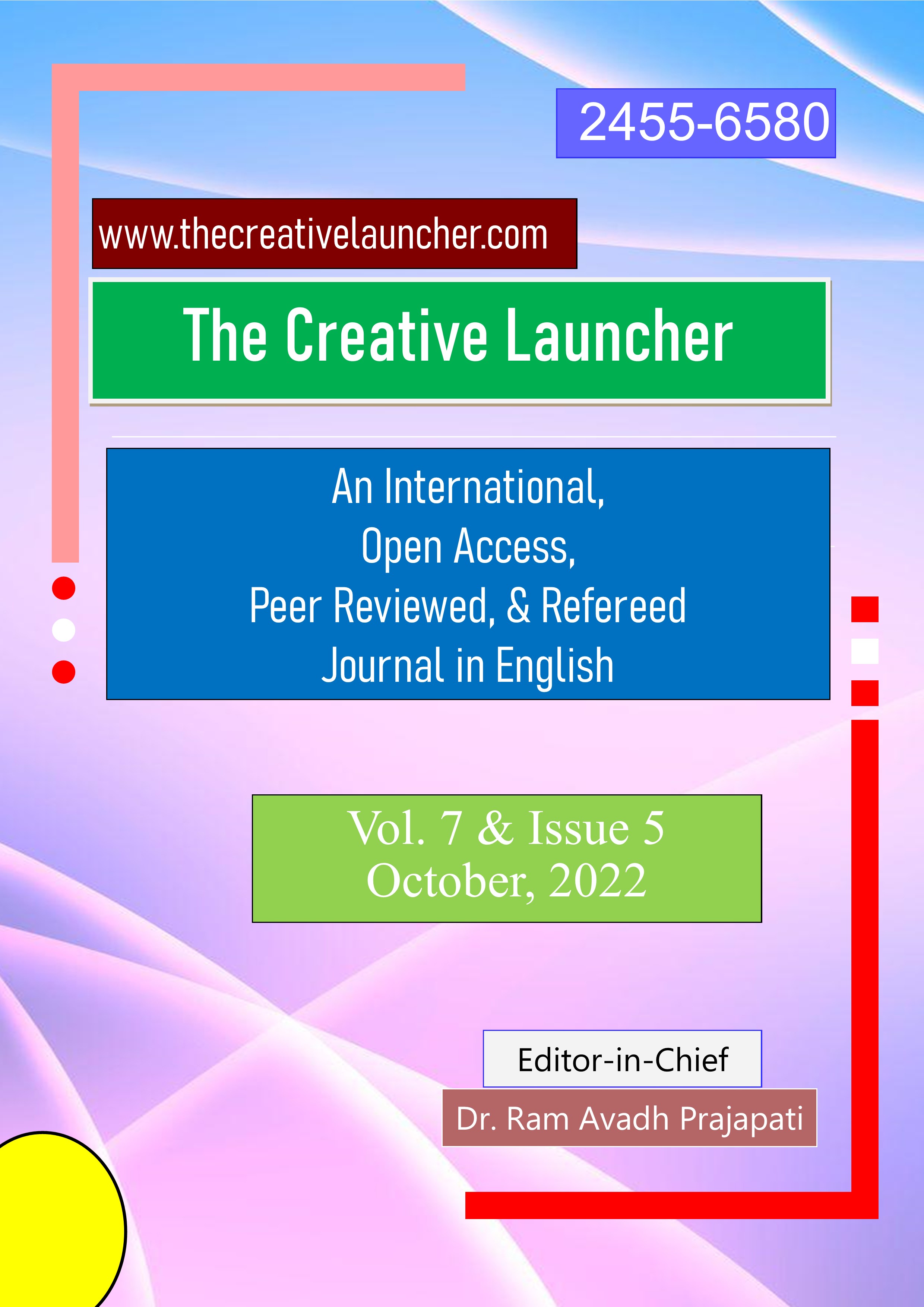Decoding Walter Morel- Class Politics in Sons and Lovers
Main Article Content
Abstract
David Herbert Lawrence’s Sons and Lovers (1913) tells the story of the Morels— a working-class family. Lawrence has referred to Sons and Lovers as his ‘colliery novel’. The present paper attempts to decode the class politics of the novel by closely focussing on Walter Morel, the chief working-class figure in the novel. The novel’s narrative pivots around the domestic concerns of the Morel family, very often in which, Walter Morel, emerges as a villain and an oppressor of his wife and children. The text poignantly portrays domestic discord and the hardships that Gertrude Morel and her children face. However, it fails to delve into or elucidate upon the underlying reasons for the emergence of these hardships in the first place. At the obvious level, Walter Morel seems to be demonised as a brute who causes his family continuous pain. However, it is imperative that the text is read within the larger social, economic, and political structures of its time, which significantly shaped and influenced the lives and action of Walter Morel and his family. This paper attempts to recuperate dispersed evidence from the margins of the novel to gainsay a superficial interpretation of Walter Morel as a mindless violent brute who is solely responsible for the trials and tribulations of the Morel family. It attempts to connect the dots between the representation of Walter Morel with the narrative’s inclination towards the middle-class value system aspired to by the other members of his family, in order to, gain a more nuanced insight into the class politics of the novel.
Downloads
Metrics
Article Details

This work is licensed under a Creative Commons Attribution-NonCommercial 4.0 International License.
References
Lawrence, D. H. Sons and Lovers. Edited by Ashok Celly, Worldview Publications, 2009.
Boulton, T. James. Ed. The Letters of D. H. Lawrence Volume I September 1901 — May 1912. Cambridge University Press, 1979. (pp.476-479).
Hawthorn, Jeremy “Lawrence and Working-Class Fiction”. Rethinking Lawrence edited by Keith Brown, McGraw- Hill Education, 1990. (pp. 67-77).
Eagleton, Terry. Literary Theory: An Introduction. 2nd ed., Blackwell Publishing,1996.
Hobsbaum, Philip Readers Guide to D.H. Lawrence. Thames and Hudson, 1981.
Finney, Brian. D.H. Lawrence Sons and Lovers. Penguin, 1990
Marsh, Nicholas. D.H. Lawrence: The Novels. Macmillan Education, UK, 2000. DOI: https://doi.org/10.1007/978-1-349-91044-1
Sagar, Keith. The Art of D.H. Lawrence. Cambridge University Press, 1981.
Goode, John. “Individuality and Society in Sons and Lovers”. Sons and Lovers. Edited by Ashok Celly, Worldview Publications, 2009 (pp.463-469).





